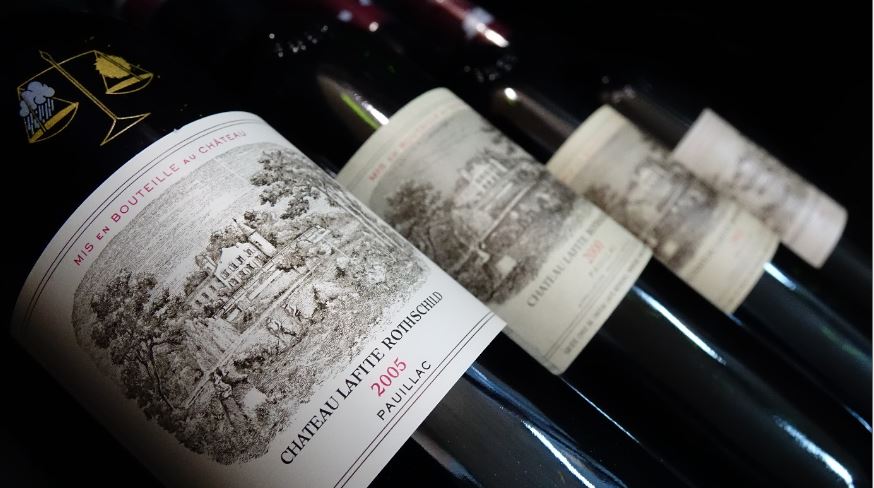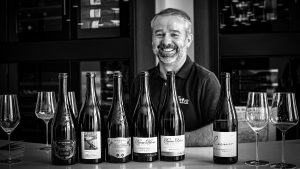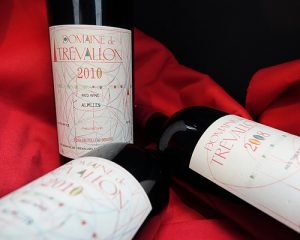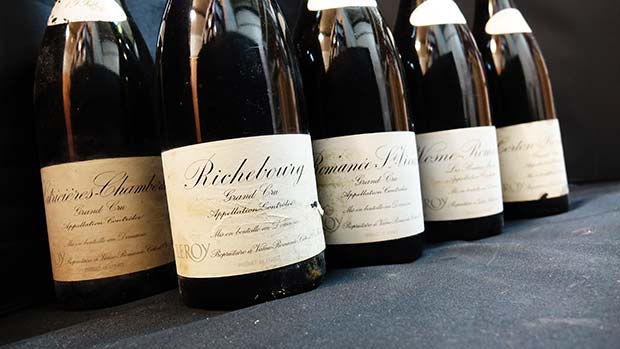
The trend seems indisputable – prices for recent vintages of Bordeaux grands crus have remained stable for many months. At the end of November, the indice iDealwine iDealwine Bordeaux index rose by 4.24%. This is slightly lower than the general index for grand cru wines, the indice iDealwine 100 (up by 5.57 %). However, some results from the auctions suggest contrasting developments. What exactly is going on? Let’s take a closer look.
Bordeaux bashing has not really had much impact at iDealwine. Our auctions are overflowing with grand cru wines from this region and they are selling very well. Undoubtedly, the share of sales for Bordeaux has been diminishing year-on-year, to the benefit of appellations that once hardly ever featured in the auction catalogues. In 2000, Bordeaux wines accounted for 80% of lots sold. By 2015, that proportion had dropped to 50% and it is still contracting in 2016 (38% at the most recent sale). This said, Bordeaux still features prominently in the auction catalogues. So, what should we think about premiers crus classés – and similar – from the region? Are some years more sought-after than others? Our analysis of iDealwine’s most recent auctions (held online) should help identify current trends.

Château Lafite Rothschild
This premier cru from Pauillac has been making the headlines at the auctions for many years. With its long-standing international reputation, especially in Asia, this wine saw its prices rocket at the end of the 2000s. At that time, Lafite was in great demand in China, with clients looking for bottles to offer as presents during business negotiations. The halcyon period ended in 2011 however when the Xi Jing Ping government, in a clamp down on corruption, put a stop to the practice of offering presents. In spite of this, Lafite is still iconic in the eyes of Chinese customers and wines from the estate are still well represented in the catalogues. Prices for recent years have remained stable, including the 2009, which sells at €716 a bottle. The 2005 is also stable – another very good year, albeit one that currently sells for around €670. In contrast, prices are going up for years approaching their peak. The 1999 (€568, +20%), the 2000 (€1200, +11%) and the 2003 (€776, +13%) especially stand out. Château Lafite’s second wine, les Carruades de Lafite, has experienced the same takeoff in price as its older sibling. Rates may have calmed down now but this label is still in great demand and of the ready-to- drink years, such as the 1999, a case of 12 bottles recently sold for €2100 – €175 a bottle (+40%).
Château Mouton Rothschild
In addition to the wine’s intrinsic quality, Château Mouton Rothschild enjoys a number of major advantages. Firstly, following in the footsteps of Château Lafite, it has received similar levels of enthusiasm from Asian wine lovers. With its almost identical name, and the fact that it comes from the same appellation area, this is no surprise. Another selling point is the fantastic succession of artists who have helped make each bottle into a little work of art for the label as well as the wine. Many wine lovers are keen to add to their collections year-on-year to create a “vertical” of vintages. Finally, the personality of its owner, Philippine de Rothschild, who died in 2014, has also contributed significantly to the wine’s success. Because of these factors, bottles of Mouton Rothschild perform very well at the auctions. And to some extent, the effect of buyers keen to collect all the labels protects it from the impact of quality issues in any given year. The decision to buy an engraved bottle to celebrate the year 2000 has proved to be a wise one. Bottles from this very successful vintage leapt across the €1000 threshold and currently sell at the auctions for €1380. The 1986, another vintage with cult status and 100/100 Parker points to boot, is very highly prized in China. At the November auctions, its listed price was established at €780. The other main, in-demand vintages are from the 1980s (1983 at €300, 1988 at €384, 1989 at €324) and the 1990s (1990 at €330, 1995 at €402). We note that 2009 and 2010, vintages shunned by the market when en primeur prices soared, are beginning to recover. The 2009 now sells for €672 (+9%) and the 2010 for €660 (+28%).
Château Haut Brion

Château Haut Brion is one of the most interesting wines to track on the market. Long considered the most attractive premier cru pricewise, it has seen its rates increase over the years at both the en primeur sales and the auctions. The estate boasts a few iconic years in the sales, including the 1989 – another vintage with 100/100 Parker points. In November, this star of the sales sold for €1440 (+32%). One more legendary year, the 1989, was listed at €588 (+17%). Also worth a mention due to high demand at the auctions is the excellent 2005 vintage (€576, +14%). A rare wine to see at the auctions, the Château Haut Brion Blanc, is proving very successful with Asian buyers, particularly Japanese. The 1990 vintage recently sold for €552 (+45%). Following in the footsteps of Château Haut Brion comes Château La Mission Haut Brion. This is the Bordeaux grand cru that increased most dramatically in value over 2015.
Château Latour
Since announcing its withdrawal from the en primeur system, from 2012 onwards, this Pauillac premier cru has been playing the scarcity card. As a result, bottles of Château Latour are almost absent from the auction catalogues – a consequence of the difficulty finding wines on the primary market. The strategy is costly without a doubt, but it is also an effective way to increase values on the auction market. Prices of the few bottles available at the auctions are invariably increasing. This applies to both good years such as the 1989 (€391, +21%) and 1996 (€660, +22%), and less prestigious ones such as the 1999 (€394, +16%) and the 1993 (€360, +24%) bearing in mind that Château Latour is considered one of the most successful wines in this difficult vintage.
Forts de Latour is also performing well. The 2005 sells at €160 (+21%) and the 1990 at €120 (+11%). Even “lesser” vintages of this wine are in demand, with the 2002 selling for €156 (+17%) and the 2007 selling for €144 (+20%).
Château Margaux
Release prices for Château Margaux are high to begin with. This trend has intensified year-by-year and as an outcome, prices at the auctions tend not to increase significantly. Mature vintages are the exception. For example, the 1983 (one of the most successful Château Margaux vintages from the 1980s) is listed at €384 (+7%) and the equally splendid 1990 now sells for €756 (+13%). The Château’s second wine, Pavillon Rouge (a good introduction to the main wine) has been a clear success at the auctions, especially with buyers from the English-speaking world. The 2004 sells for €120 (+20%), the 1999 for €122 (+13%), and the 2002 for €116 (+7%). Prices for Pavillon Blanc, a 100% Semillon produced from Château Margaux vineyards are also doing well. The 2004, for instance, recently sold for €144 (+26%).
Lookup a price estimate for a wine
Read further on iDealwine Le Blog:
- Auction Report: November, Jura wines make a breakthrough
- Auction Report: October, Haut Brion 1989, Chateau Chalon, top Champagne
- Auction Report: September, Clos Rougeard breaks more world records
- Auction Report 10 & 31 August: summer trends
- Auction Report 20 July: collectable Cote de Nuits from Noellat and Clair-Dau
- Auction Report 15 June: mature vintages from top Burgundy estates on the rise
- Auction Report 1 June: marked success for the big names from the Rhône
- Auction Report 25 May: Top Alsace & Rhône: La Chapelle 1961
See all wines currently on sale
Register here to access auctions and fixed-price sales




Extremely interesting assessment, thank you.
Thanks Henry, glad you enjoy. You can also check our market reports on the Drinks Business.